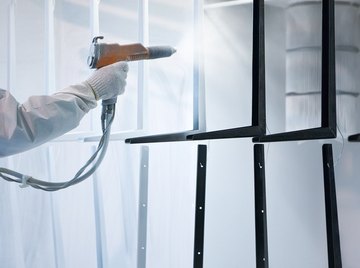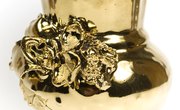
Electroplating is used to coat a surface with a thin layer of metal through electrochemical processes. As students, we may remember such demonstrations from science class, in which electroplating was used to illustrate the chemical principles underlying the process, but the technique has many practical applications.
The object to be plated is placed in a solution containing ions of the metal with which it is to be plated. When a negative charge is applied to the object, the positively charged metal ions are attracted to it. When these ions touch the negatively charged object, the ions are chemically reduced, meaning they become neutral. No longer charged, they become insoluble, precipitating as solid metal, in a very thin coat on the object that is being plated.
Aesthetics
Some metals are considered far more attractive and valuable than others, gold and silver being the oldest and most obvious examples. But gold and silver are rare and expensive. Through electroplating, a very thin layer of gold or silver can coat a less valuable metal, making a final product with all the luster and beauty of those rare metals, at a fraction of the cost. This was the first commercial application of electroplating, and has been in use since the early 1800s. Thin layers of chromium are often used on appliances and automobiles to produce a pleasant, shiny appearance.
Protection
Electroplating can also protect surfaces by covering them with a thin layer of metal that will be more resistant to corrosion than the material of which they are primarily composed. Zinc and cadmium protect the underlying surface by being more reactive, corroding before the base metal underneath. Copper, nickel and chromium work by forming a protective, un-reactive coating.
Conductivity
Gold and silver are excellent conductors of electricity, but they are, as noted, prohibitively expensive. Through electroplating techniques, very small amounts of these precious, highly conductive metals can be incorporated into electronic components and integrated circuits. Cell phones, computers and other electronic devices all use electroplating techniques in their circuits.
Other Uses
While beauty, protection from corrosion, and electrical conductivity are the properties most commonly imparted through electroplating, as described above, electroplating can also be used to reduce friction, protect from abrasion, protect from radiation, or otherwise impart desired characteristics to a surface that lacks those properties. Electroplating is also used not to impart the properties of the electroplating substance, but simply to control the size of machine parts. Electroplating allows undersized parts to be thickened precisely to the desired size.
References
About the Author
Andrew Breslin has been writing professionally since 1994. His articles and op-ed pieces have appeared in the "South Florida Sun Sentinel," "St Paul Pioneer Press," "Detroit Free Press," "Charlotte Observer," “Good Medicine,” and others. He studied molecular biology at Westchester University and frequently writes about science and mathematics.
